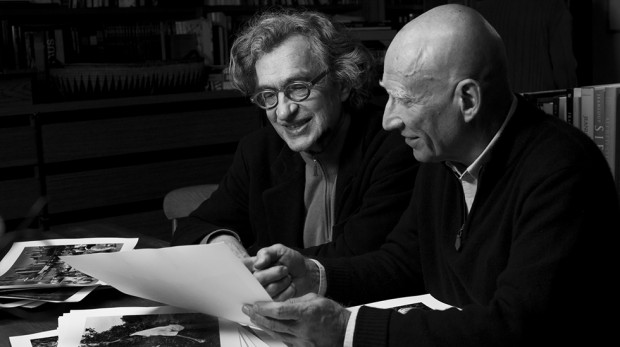
Directed by Wim Wenders, Juliano Ribeiro Salgado
Starring Sebastião Salgado, Wim Wenders, Juliano Ribeiro Salgado
Even if you are not familiar with the artist, chances are at some stage in your life you have seen the work of Sebastião Salgado. His black and white photographs have shown the world famine in Ethiopia, genocide in Rwanda, columns of refuges in Kosovo, and oil slicked workers trying to quench fires in the aftermath of Kuwait. The Salt Of The Earth tells the story of this former economist turned photographer and how four decades of work have seen him in almost ever corner of the world, capturing a tide of humanity in both jubilation and desperation.
The genius of director Wim Wenders’ approach is introducing us to the man initially through his work. The two are very closely tied together, a motif often repeated through the film as Sebastião Salgado emerges from his photographs, a ghostly talking head to continue the narrative or to comment on an aspect of the picture. These small details further enriches the experience, making the audience feel part of the process.
That introductory image of 50,000 people working in an open cut gold mine encapsulates not only the timeless quality of the work, but also echoes many of the themes that resonate throughout Sebastião’s art. The effects of economic drives on a large body of humanity (be that through war, famine, forced migration, environmental impact or industrialisation) is a theme that reoccurs again and again. As Sebastião’s narration reminds us, the labourers in this mine could be taking part in the building of the pyramids or King Solomon’s mines. His vivid recounting makes us experience what it was like to be amongst it, giving context to the mud-caked men we are seeing. He is a natural storyteller, both visually and verbally, and it is through that we are drawn into his life.
It was a smart and reflexive move to incorporate Salgado so thoroughly into the process of the documentary. As Wenders reflects, this is a subject that is very aware of the eye of the camera focused on him. There is no chance for it not to be intrusive or fade into the background. Salgado is aware of it and modifies his stance for it. As the director so succinctly puts it as a picture of his cameraman taken by Salgado flashes onto the screen, “This one shoots back.” To this end Wenders’ co-director, Juliano Ribeiro Salgado (the son of Sebastião), is a mixed blessing. His interaction with his father grants us another layer of character, perhaps further separated and more personal to the work than anything else we see in The Salt Of The Earth, but also removes us from the powerful narrative that the older Salgado’s pictures tell.
When it is in full stride, The Salt Of The Earth is a powerful work. At times harrowing, at others liberating, these extraordinary pictures tell the story not just of one man’s life, but some of the most moving events of the last 40 years.
DAVID O’CONNELL
The Salt Of The Earth screens at Somerville, UWA from Monday, February 16, until Sunday, February 22, and ECU Joondalup Pines from Tuesday, February 24, until Sunday, March 1, as part of Lotterywest Festival Films. For tickets and session times, go to perthfestival.com.au.